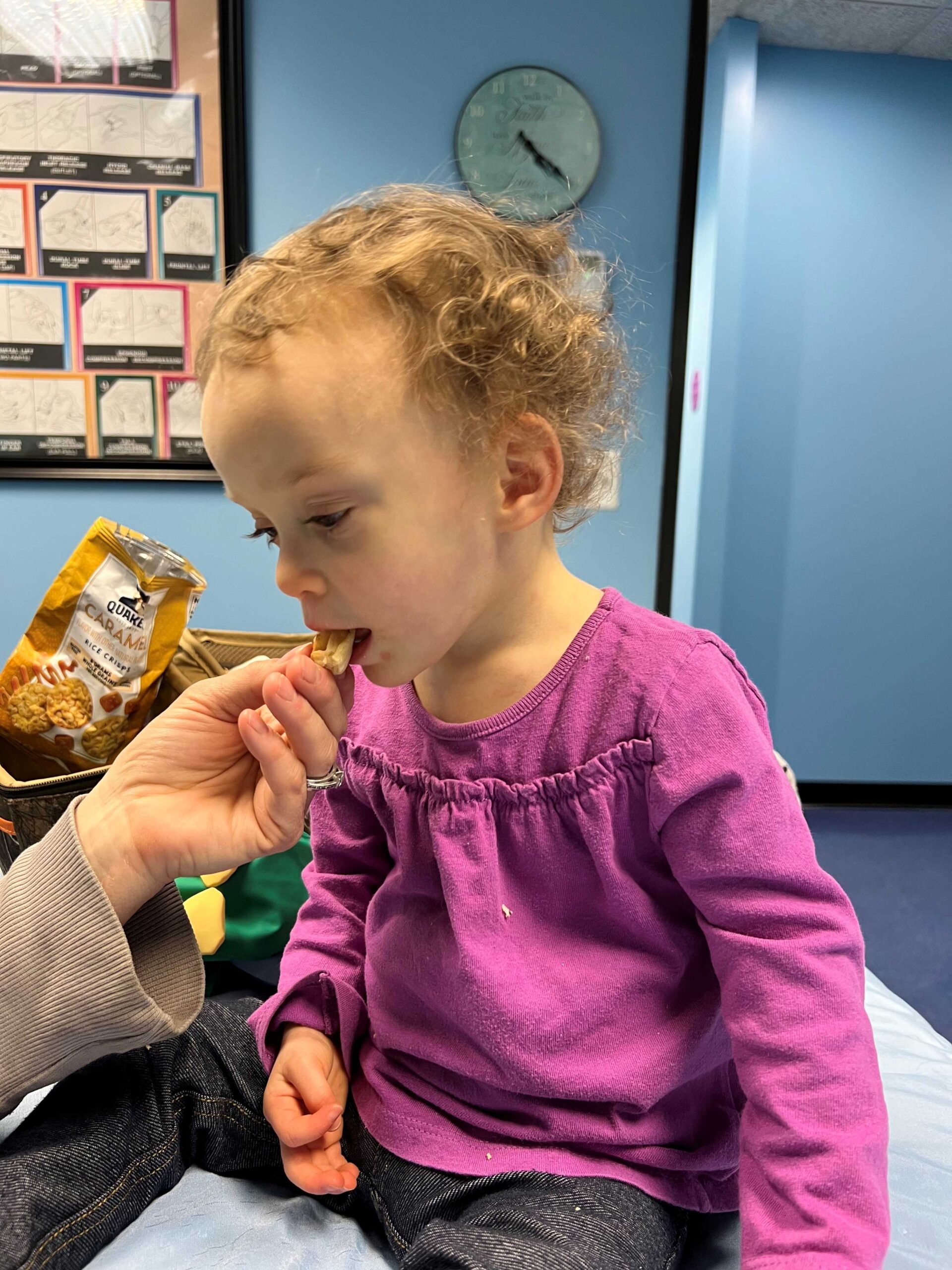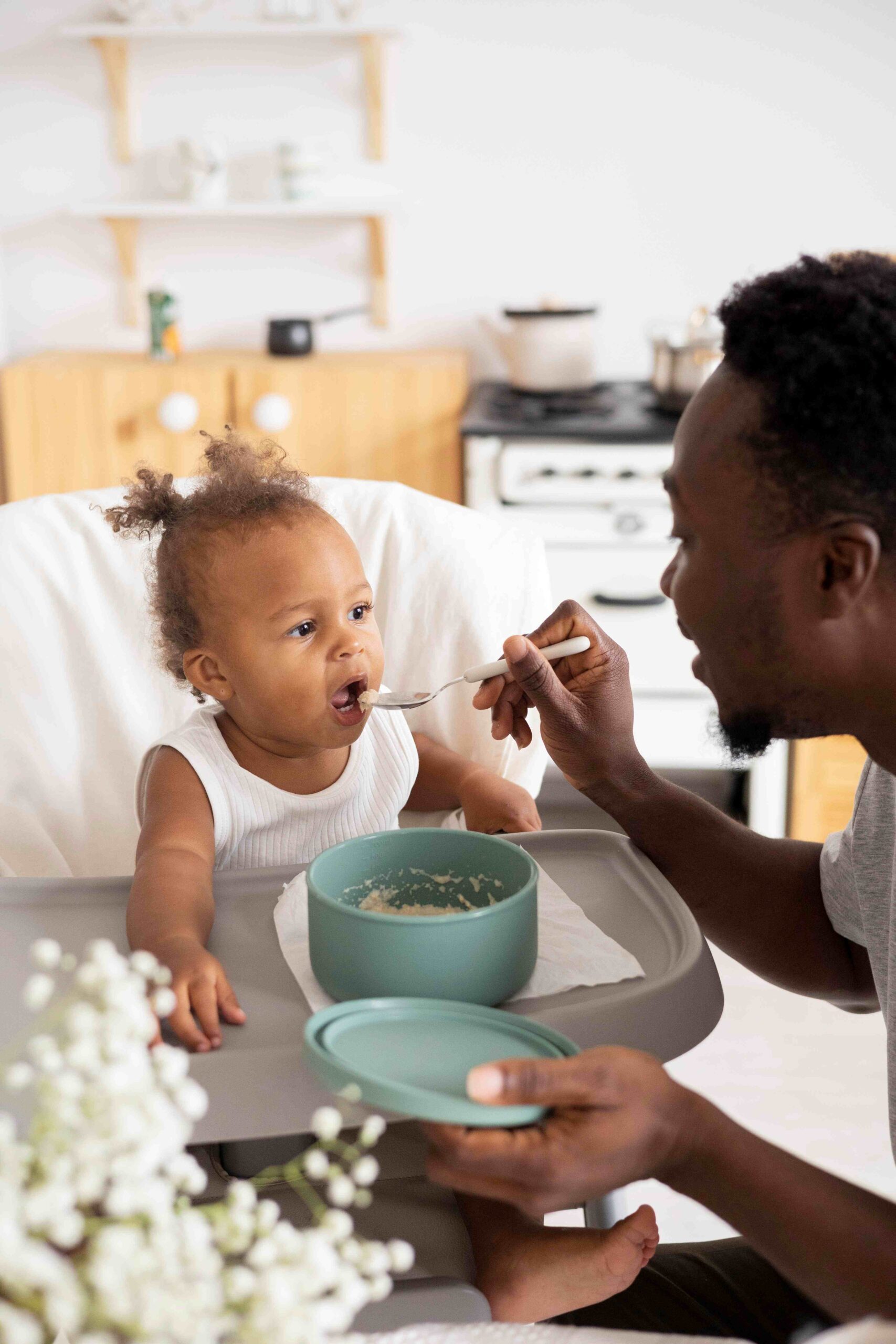
Understanding When to Start Solids
Before diving into how to introduce solids, it’s essential to know when to begin. The general recommendation is to start solids around 6 months of age, but every baby develops at their own pace. There are some key signs to watch for that may indicate your baby is ready:
Sitting up independently
Loss of the tongue-thrust reflex
Interest in food

Traditional Purees: A Gradual Approach
For many years, parents have started their babies on pureed foods. This approach allows for a gradual introduction of different textures and flavors, starting with smooth, thin purees and slowly progressing to thicker and chunkier consistencies as your baby’s chewing and swallowing skills improve.
Benefits of Starting with Purees:
Control over textures
Reduced choking risk
Guided feeding
Common First Purees:
- Mashed sweet potatoes or carrots
- Pureed apples or pears
- Mashed bananas or avocados
- Oatmeal or other iron-fortified baby cereals
It’s a good idea to introduce new foods one at a time, waiting a few days between each new food to monitor for any signs of allergies.
Baby-Led Weaning (BLW): A Self-Feeding Approach
Baby-led weaning (BLW) is an alternative to purees that allows babies to self-feed from the start. Rather than spoon-feeding your baby, you offer them soft, appropriately-sized pieces of food that they can pick up and explore on their own.
Benefits of Baby-Led Weaning:
Improved motor skills
BLW encourages babies to practice fine motor skills, such as grasping and bringing food to their mouths.
Encourages independence
Exposure to different textures
Foods to Offer for BLW:
- Steamed or soft-cooked vegetables (e.g., broccoli, carrots)
- Soft slices of avocado or banana
- Small pieces of toast with mashed toppings
- Shredded chicken or soft tofu
As with purees, it’s crucial to introduce one food at a time and monitor for allergies. While BLW can be a fantastic way to introduce solids, caregivers must be vigilant about choking hazards and ensure that all foods are appropriately prepared to be soft and easy for the baby to manage.

Combining Purees and BLW
You don’t have to choose between purees and BLW—many families find success by combining both approaches. You could start with purees for the first couple of weeks and then gradually incorporate soft finger foods as your baby becomes more comfortable with textures.
Combining methods allows you to enjoy the benefits of both approaches, such as offering the variety and independence of BLW alongside the smoother introduction that purees provide.
Feeding Therapy and Occupational Therapy: Support for Feeding Challenges
Some babies may encounter difficulties during the transition to solids, whether it’s resistance to certain textures, trouble swallowing, or aversions to new foods. Pediatric feeding therapy, led by an occupational therapist, can help address these issues.
What is Pediatric Feeding Therapy?
Feeding therapy focuses on improving a child’s ability to eat various foods and textures comfortably and safely. Feeding difficulties can be caused by many factors, including oral-motor delays, sensory processing issues, or medical conditions such as reflux. Occupational therapists who specialize in feeding therapy, like ours at MPT in Farmington Hills, MI, work with children to overcome these challenges and help them develop positive associations with mealtime.
Signs Your Baby May Need Feeding Therapy:
- Gagging, choking, or vomiting during meals
- Refusing to eat or becoming distressed when presented with certain foods
- Difficulty transitioning from purees to more solid textures
- Limited food variety or reliance on specific foods/textures
- Difficulty using age-appropriate feeding skills, such as chewing or swallowing
How Can an Occupational Therapist Help with Feeding?
Occupational therapists (OT) use various techniques to help children overcome feeding difficulties. Some of the strategies we may use include:
Oral-Motor Skill Development
If your child has difficulty chewing or swallowing, an OT can help strengthen the muscles needed for these tasks through exercises and therapeutic play.
Sensory Integration
Feeding Routines
Caregiver Education

Tips for Creating a Positive Mealtime Experience
Whether you’re starting with purees or trying BLW, creating a positive and low-stress mealtime environment is essential. Here are some tips to help you foster a healthy relationship with food for your baby:
- Keep it Relaxed: Avoid pressuring your child to eat certain foods or finish their plate. Instead, focus on making mealtime an enjoyable experience where your baby can explore new tastes and textures.
- Offer a Variety of Foods: Introduce a wide range of flavors, textures, and colors to keep mealtimes interesting. The more variety your child is exposed to early on, the more likely they are to accept different foods later.
- Follow Your Baby’s Cues: Pay attention to your baby’s hunger and fullness cues. Let them take the lead in deciding how much they want to eat.
- Stay Consistent: Establish a mealtime routine, including regular times for meals and snacks, so your baby knows when to expect food.
- Involve Your Baby in Mealtime: If you’re practicing BLW, allow your baby to handle their food and explore it with their senses. For purees, you can give them a spoon to hold while you feed them, fostering a sense of independence.
- Stay Patient: Some babies may take longer to warm up to certain foods, and that’s okay. Keep offering different foods in a no-pressure environment, and eventually, your baby may come around.

Final Thoughts
Introducing solids to your baby is a major developmental step that can be both exciting and challenging. Whether you choose to start with purees, baby-led weaning, or a combination of both, what matters most is creating a positive and supportive environment for your baby as they explore new foods.
If you find that your baby is struggling with feeding, consider consulting with an occupational therapist who specializes in pediatric feeding therapy. Feeding therapy can provide specialized support to help your child overcome any feeding challenges and foster a healthy, enjoyable relationship with food.
For more information on feeding therapy, occupational therapy, or support with feeding difficulties, don’t hesitate to reach out to Michigan Pediatric Therapy for expert guidance. The earlier you intervene, the sooner your baby can develop the skills they need to succeed at mealtimes and beyond.
Michigan Pediatric Therapy
📍 27655 Middlebelt Rd., Suite 130, Farmington Hills, MI 48334
📞 (248) 939-4030
🌐 mipediatrictherapy.com




